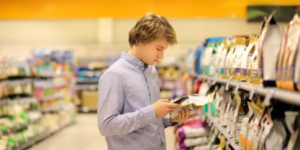PET plastic is one of the most frequently recycled plastics, as its high recycling rate allows it to be used repeatedly, using significantly less energy than traditional raw materials.
However, PET has its downsides; its dependence on petroleum, greenhouse gas emissions during production, and potential water contamination remain major concerns.
Recyclable
 The eco-friendly PET packaging can be recycled, helping keep it out of landfills and conserve space. Furthermore, its lightweight nature reduces fuel consumption and emissions during transportation, and its lower density than many other packaging materials like glass or aluminium makes it easier to handle and transport.
The eco-friendly PET packaging can be recycled, helping keep it out of landfills and conserve space. Furthermore, its lightweight nature reduces fuel consumption and emissions during transportation, and its lower density than many other packaging materials like glass or aluminium makes it easier to handle and transport.
The PET plastic recycling process transforms post-consumer PET into recycled polyethylene terephthalate (rPET). During this step, PET is melted down and turned into plastic pellets or flakes, which are later used to manufacture new PET bottles or products – this recycling method uses less energy than producing virgin plastic resin from scratch.
However, certain obstacles can thwart the success of eco-friendly PET packaging recycling programs. One such obstacle is adding paper stickers onto recyclable packaging – this creates contamination of the recycling stream as paper does not belong in with plastics for recycling.
Biodegradable
PET plastic resin is most frequently used in packaging applications and products. Recyclable and biodegradable, it is strong, safe, transparent and can be recycled many times without leaching harmful chemicals into its contents, making it suitable for food containers. Another eco-friendly packaging choice is PLA (polylactic acid), made from renewable plant sources like corn that can be reused without draining valuable resources from Mother Earth.
Eco-friendly PET packaging is specifically designed to break down in the environment, reducing waste sent to landfills and oceans. This type of packaging can be produced using materials like starch or sugarcane; its compostability also helps lower greenhouse gas emissions while conserving natural resources.
Mechanical recycling of PET plastic, most frequently found in bottles, is the primary method for recycling this form of the plastic waste stream. Mechanical recycling allows reusing plastic scrap and is considered relatively efficient; however, its ability to recycle preforms and film waste remains limited.
Chemical recycling of PET involves breaking it down into its constituent monomers for repolymerisation; however, this requires extensive energy use and generates high greenhouse gas emissions. More research must be conducted into developing cheaper and more eco-friendly processes for recycling PET.
Compostable
PET plastic is one of the world’s most popular plastics, offering many uses and benefits. PET is highly versatile with its strength-to-weight solid ratio and water resistance, making it suitable for various products and packaging purposes. Furthermore, its transparency allows consumers to see what’s inside each package, making this material an appealing packaging material choice.
The PET industry is committed to keeping our environment as healthy and clean as possible, working hard to reduce its environmental footprint. One way of doing this is through eco-friendly materials and strict waste management policies; such measures will protect both the environment and PET recycling operations while making recycling seamless.
PET plastic can be recycled multiple times for reuse and reformed into new bottles for non-food uses, reducing the demand for virgin PET and greenhouse gasses released during production. Furthermore, its lightweight nature helps reduce shipping costs and warehousing space requirements.
PET plastic cups, unlike PLA ones made of GMO corn grown with toxic pesticides, can be recycled repeatedly without degrading. Their production requires much less energy than raw plastic production; using recycled PET will significantly decrease waste produced and thus end up in landfills, oceans, or our backyards.
Reusable
PET can be recycled multiple times, making it a sustainable option for manufacturers and consumers. A recent survey discovered that 71% of consumers want packaging made from recycled materials – manufacturers should take advantage of this growing consumer preference to differentiate themselves among competitors using sustainable packaging as an edge over them.
One of the keys to successfully managing plastic waste is creating mono-material collection streams. It can be accomplished through deposit-return laws or bottle bills that offer consumers financial incentives for participating. Such schemes increase recycling rates while improving PCR PET quality and fostering innovation that reduces environmental impacts.
Post-consumer PET (PCR) recycling is one of the most efficient ways of eliminating plastic waste from landfills, waterways and oceans. Opting for recycled PET over virgin PET can significantly decrease greenhouse gas emissions by as much as 71%! The recycling process itself consists of three steps.